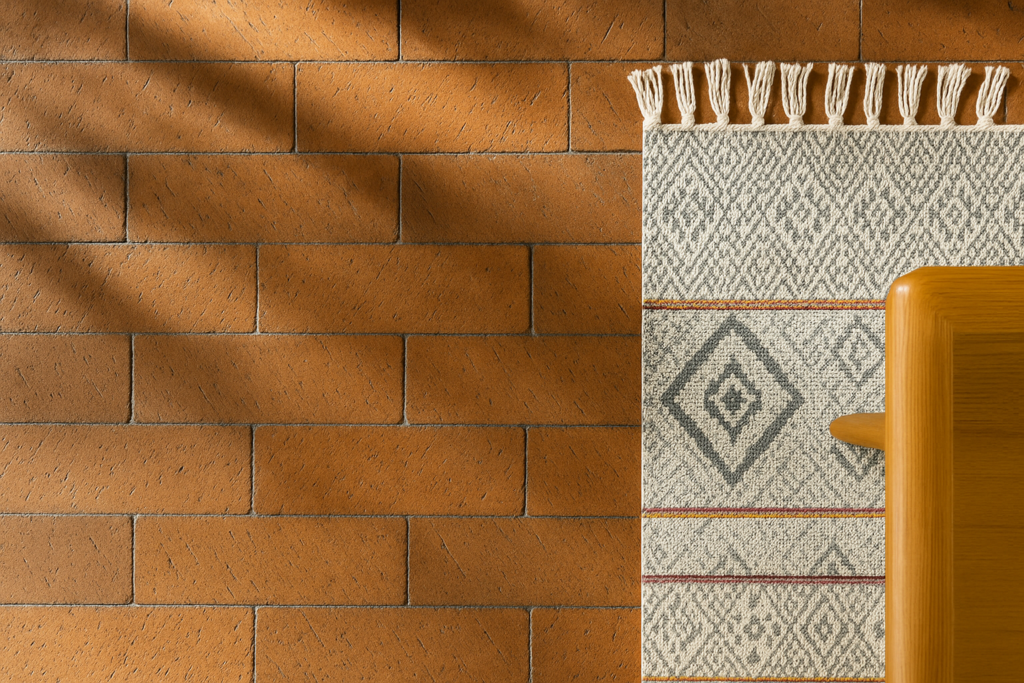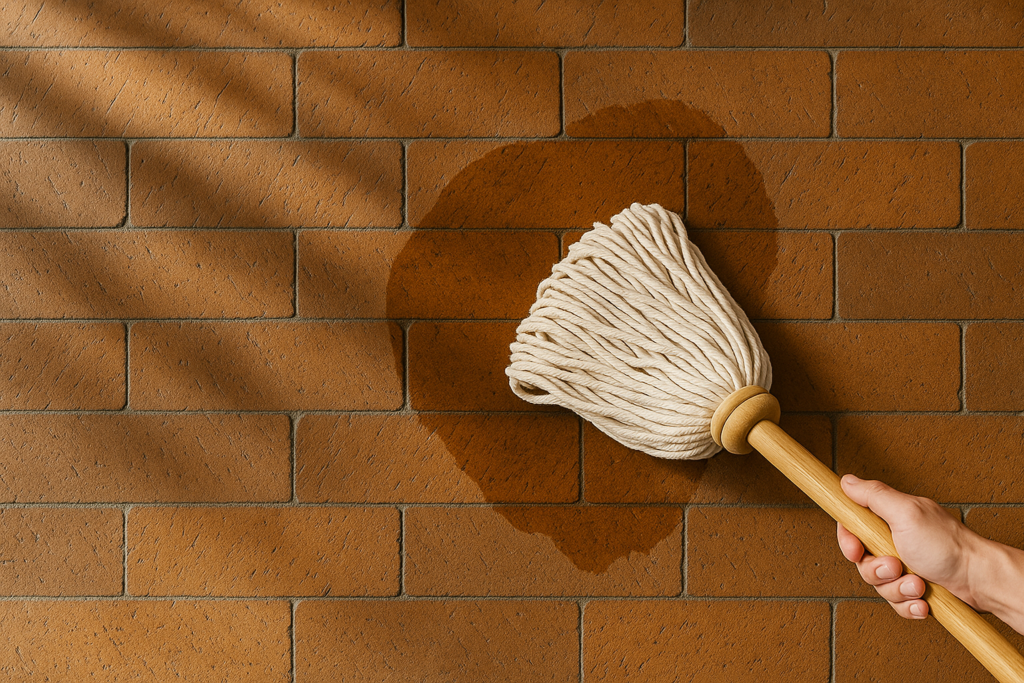If you’re on the hunt for a flooring material that feels soft underfoot, offers a unique look, and doesn’t harm the environment, cork flooring might just be what you’re looking for. Often overlooked in favor of hardwood, bamboo, or vinyl, cork is quietly rising in popularity for homeowners who care about comfort, sustainability, and style.
Table of Contents
ToggleBut like any material, cork flooring isn’t without its trade-offs. In this guide, we’ll explore the pros and cons of cork flooring, cover everything from installation and design to maintenance and costs, and help you decide if it’s the right fit for your space.
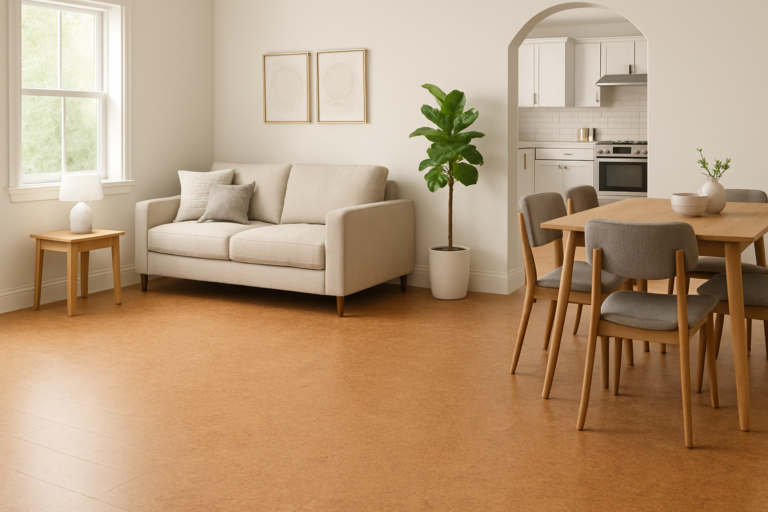
What is Cork Flooring?
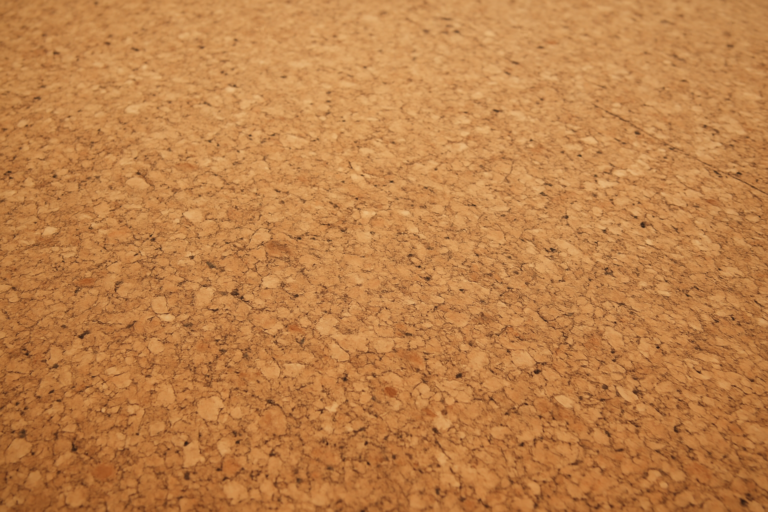
Cork flooring is made from the bark of the cork oak tree, primarily found in Mediterranean regions like Portugal and Spain. The bark is harvested without harming the tree itself, making it a highly sustainable resource that can regenerate every 9–12 years. After harvesting, the bark is ground, pressed, and formed into sheets or planks used as flooring. It comes in two main forms: glue-down tiles and floating floors that click together without adhesives. Cork can be finished in various ways, offering natural, stained, or printed designs to suit a range of home styles.
The Pros of Cork Flooring
- One of the biggest advantages of cork flooring is its eco–friendliness. Because cork is harvested without cutting down the tree, it’s one of the most sustainable flooring materials available. The trees remain alive and continue absorbing carbon dioxide, making cork a carbon-negative product. Additionally, cork is biodegradable and recyclable, giving it an excellent lifecycle compared to synthetic alternatives like vinyl or laminate.
- Comfort is another key strength of cork. Thanks to its cellular structure filled with millions of tiny air pockets, cork provides a soft, cushioned feel underfoot. This makes it especially suitable for kitchens where you might spend a lot of time standing, or for homes with young children who spend time playing on the floor.
- Cork is also a natural insulator. It provides excellent thermal insulation, helping keep rooms warm in the winter, and contributes to acoustic comfort by absorbing sound and reducing echo. In fact, cork floors are often used in music studios and libraries for this reason.
- Another major benefit is its hypoallergenic nature. Cork naturally resists mold, mildew, and pests, and it doesn’t trap dust or allergens the way carpet does. For families with allergies or respiratory sensitivities, this can be a significant plus.
- In terms of aesthetics, cork offers a distinct visual appeal. Its organic grain and warm color tones can add texture and character to any room. And with advancements in manufacturing, modern cork flooring can even be printed to mimic the look of wood planks or ceramic tile while retaining the comfort and warmth of cork.
The Cons of Cork Flooring
- Despite its many strengths, cork flooring does come with a few notable drawbacks. One of the main concerns is durability. While cork has a natural resilience, it is still a relatively soft material compared to hardwood or tile. This makes it prone to dents and scratches, especially under heavy furniture or from pet claws. Although cork will often recover from minor compression, deeper damage may be permanent.
- Another issue is sunlight exposure. Cork can fade or discolor over time when exposed to direct sunlight. Without protective window treatments like curtains or UV-filtering films, areas of your cork floor could become unevenly colored, which may be a concern in rooms with large windows or skylights.
- Cork’s performance in moisture–prone environments is also a limitation. While it’s more water-resistant than hardwood, cork is not waterproof. If exposed to standing water or excessive humidity over time, it can swell, warp, or develop mold. That’s why cork is not typically recommended for bathrooms, basements with water issues, or outdoor areas.
- Maintenance is another factor to consider. Cork needs to be sealed periodically—usually every 3 to 5 years—to protect it from moisture and stains. Without this protection, the surface can degrade faster. Daily maintenance is relatively simple, but the requirement for resealing may be a deal-breaker for some homeowners seeking low-maintenance solutions.
- Finally, in terms of design flexibility, cork does offer fewer bold color or pattern options compared to vinyl, laminate, or even tile. While this may not be a problem for those who appreciate its natural aesthetic, those seeking more modern or vivid styles might feel limited.
Cork Flooring Costs
Cork flooring typically falls into the mid-range of flooring options in terms of cost. The material itself usually costs between $3 and $8 per square foot, depending on the quality, finish, and brand. Professional installation can add another $2 to $5 per square foot, bringing the total installed cost to around $5 to $13 per square foot.
DIY-savvy homeowners can save significantly by installing floating cork floors themselves. However, glue-down cork tiles may require more expertise, especially when sealing is involved.
Quality and Durability
The longevity of cork flooring depends heavily on the quality of the material and how well it’s maintained. Higher-density cork with factory-applied UV and moisture-resistant coatings tends to be more durable. In general, you can expect cork flooring to last 10 to 30 years, with premium products on the higher end of that range.
It’s worth noting that cork is naturally resistant to rot and insects, and many brands now offer multi-layered cork planks with durable finishes that enhance longevity and performance under foot traffic.
Maintenance & Cleaning
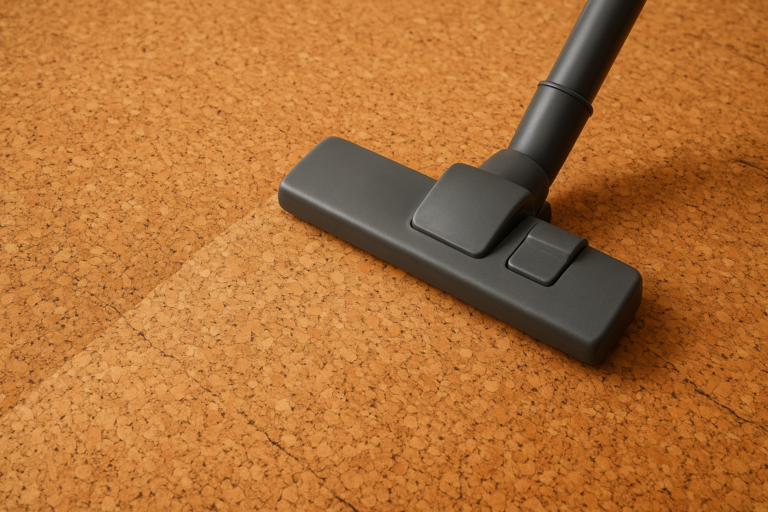
Cork flooring is fairly easy to maintain, but consistency is key. Daily upkeep involves sweeping or vacuuming to remove grit that could scratch the surface. For deeper cleaning, use a damp mop with a cleaner that’s pH-balanced and safe for cork. Avoid soaking the floor or using steam mops, as excessive moisture can cause damage over time.
Every few years, your cork floor will need to be re-sealed with a polyurethane or wax finish. This sealant helps protect the cork from stains and moisture, especially in kitchens or entryways. Adding rugs to high-traffic areas and using furniture pads can also extend the life of the floor.
Repair Options
Minor damage to cork flooring can often be repaired without replacing entire sections. Small scratches and nicks can be concealed using a wood filler or a touch-up marker matched to your floor’s color. For deeper dents, the resilient nature of cork may allow some areas to bounce back with humidity or gentle heat.
If a plank or tile is badly damaged, it’s usually possible to replace just that section—especially with floating floors. For glue-down tiles, repairs can be more labor-intensive but still manageable with the right tools and adhesives.
Design & Style Options
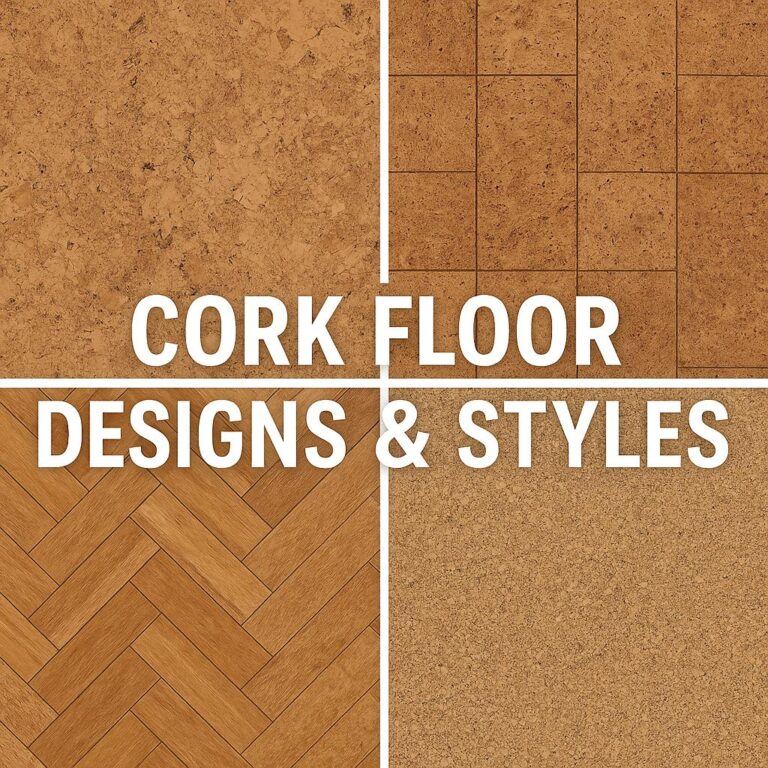
Though traditionally limited in style, modern cork flooring offers more design options than ever. Natural cork has a distinctive grain and comes in earthy tones like tan, brown, and grey. Manufacturers now offer cork that’s stained in darker hues or even printed with high-definition images that mimic wood planks, stone, or ceramic tile.
These design enhancements allow cork to complement both traditional and contemporary interiors, making it a versatile choice that doesn’t compromise on comfort.
Cork vs. Bamboo Flooring
Cork and bamboo are both celebrated for their sustainability, but they differ in performance and feel. Cork is softer and warmer underfoot, making it ideal for areas where comfort matters. Bamboo, especially strand-woven bamboo, is harder and more scratch-resistant, which may make it a better choice for homes with pets or heavy furniture.
Moisture resistance is another consideration—bamboo typically handles humidity better, while cork requires more care and sealing. Aesthetically, bamboo resembles traditional hardwood more closely, while cork offers a more textured, organic look.
Ultimately, if you value comfort and sound insulation, cork may be preferable. If you need hardness and water resistance, bamboo might be the better pick.
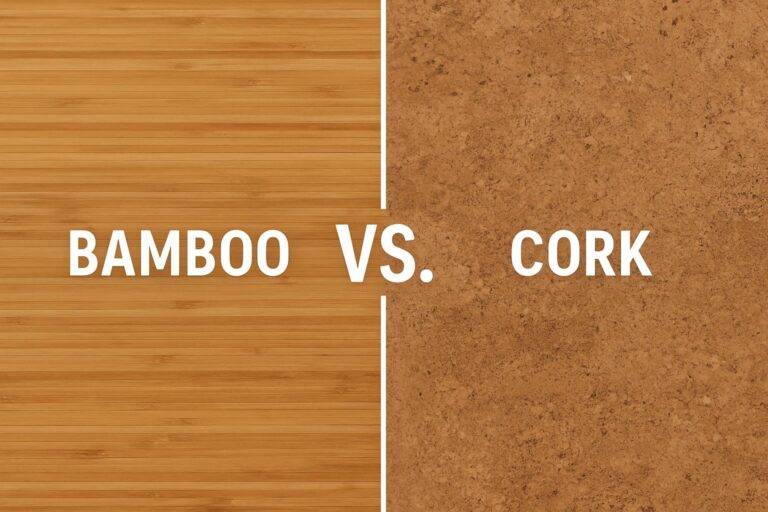
| Feature | Cork Flooring | Bamboo Flooring |
|---|---|---|
| Sustainability | High | High |
| Comfort | Softer, Cushioned | Harder Underfoot |
| Durability | Moderate | More durable overall |
| Moisture Resistance | Lower | Higher (esp. strand woven) |
| Maintenance | Needs Sealing | Easier to maintain |
| Price Range | $5-13/sq.ft installed | $5-10/sq.ft installed |
| Appearance | Unique texture | Looks like hardwood |
Top Cork Flooring Brands
Some of the leading brands in cork flooring include:
• Wicanders: Known for combining cork’s comfort with advanced protective coatings, offering long-lasting performance and style.
• APC Cork: Offers a wide selection of colors and patterns with an emphasis on sustainability.
• USFloors (COREtec): Blends cork with engineered vinyl for hybrid products that improve durability and water resistance.
• WE Cork: A heritage brand with traditional and innovative cork flooring solutions.
• Globally Inspired Cork: Offers unique, fashion-forward designs that blend natural textures with modern trends.
Is Cork Flooring Right for You?
So, is cork flooring the right choice for your home?
Cork is a great option if you’re looking for a sustainable, soft, and quiet floor. It’s ideal for living rooms, bedrooms, and kitchens—anywhere comfort and aesthetics matter. However, it’s not for everyone. If your space is prone to moisture, or if you have large pets and need a more scratch-resistant surface, cork may require more upkeep than you’d prefer.
Consider how much maintenance you’re willing to commit to, and whether cork’s unique appearance fits your interior style. When treated properly, cork can be both functional and beautiful, offering long-term benefits that many homeowners love.
Cork Flooring Alternatives
If cork doesn’t check all your boxes, you may want to consider other options:
• Bamboo is harder and more durable but less cushioned.
• Luxury vinyl plank (LVP) is waterproof, durable, and available in many styles.
• Hardwood offers timeless beauty, though it’s more expensive and less eco-friendly.
• Laminate is affordable and stylish, but lacks the natural feel and warmth of cork.
• Ceramic tile is excellent for moisture-prone areas but hard and cold underfoot.
Each has its own pros and cons depending on your priorities.
Frequently Asked Questions
Q: Is cork flooring waterproof?
No, cork is water-resistant when sealed, but it’s not waterproof. Standing water should be avoided.
Q: Can I use cork flooring in kitchens?
Yes, many people use cork in kitchens for its comfort, but regular sealing and prompt spill cleanup are essential.
Q: Does cork flooring fade?
Yes, it can fade with UV exposure. Use window treatments or UV-filtering finishes to minimize this.
Q: Is cork safe for pets?
Cork is safe and quiet for pets but may scratch more easily than harder flooring.
Q: How long does cork flooring last?
With proper care, cork floors can last anywhere from 10 to 30 years.
Final Thoughts
Cork flooring offers a rare blend of comfort, sustainability, and character. It’s not just a flooring material—it’s a lifestyle choice. While it may require a bit more attention than some alternatives, many homeowners find its warmth, quiet, and eco-conscious qualities well worth the effort.
Still unsure? Test a sample at home and see how it feels under your feet. Sometimes, the best way to know if cork is right for you is to experience it for yourself.

